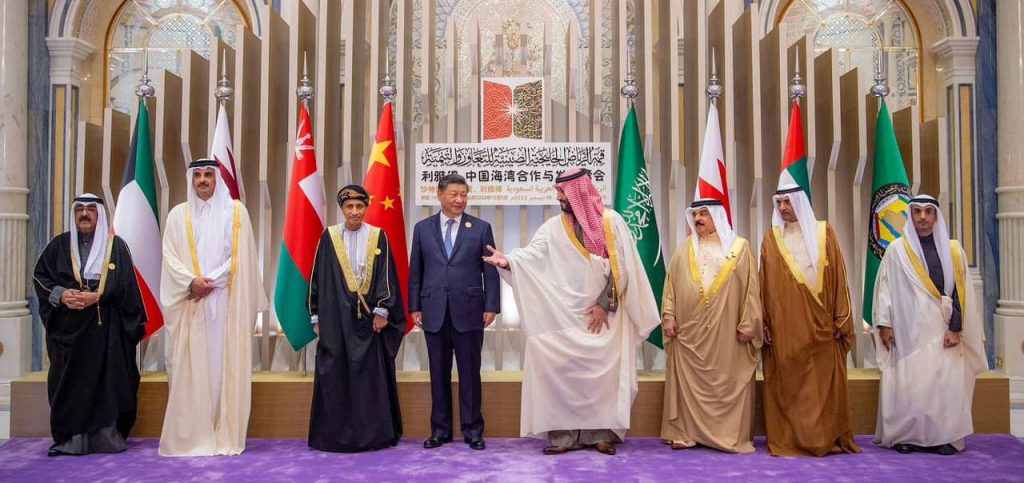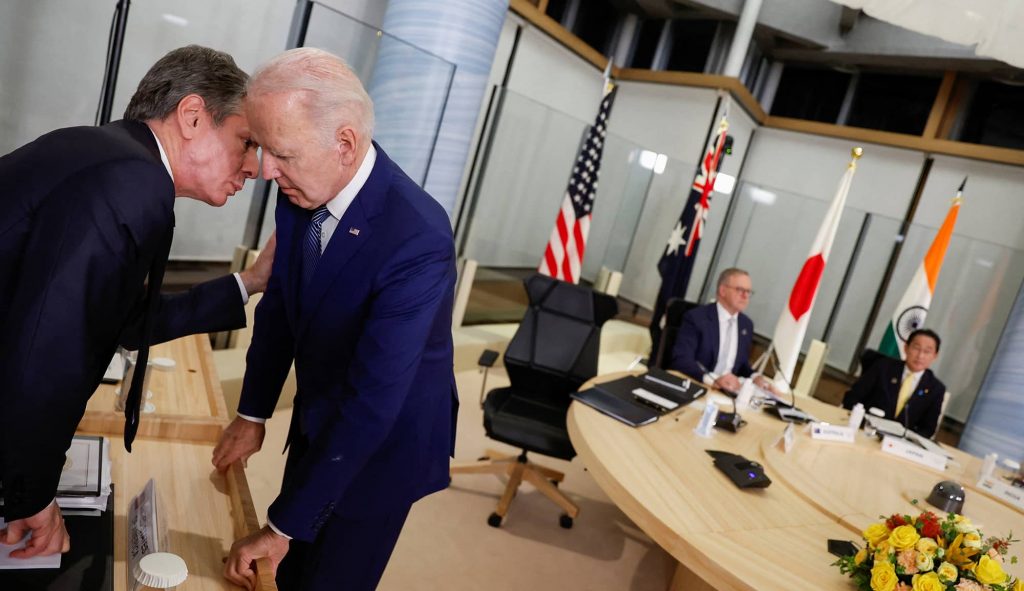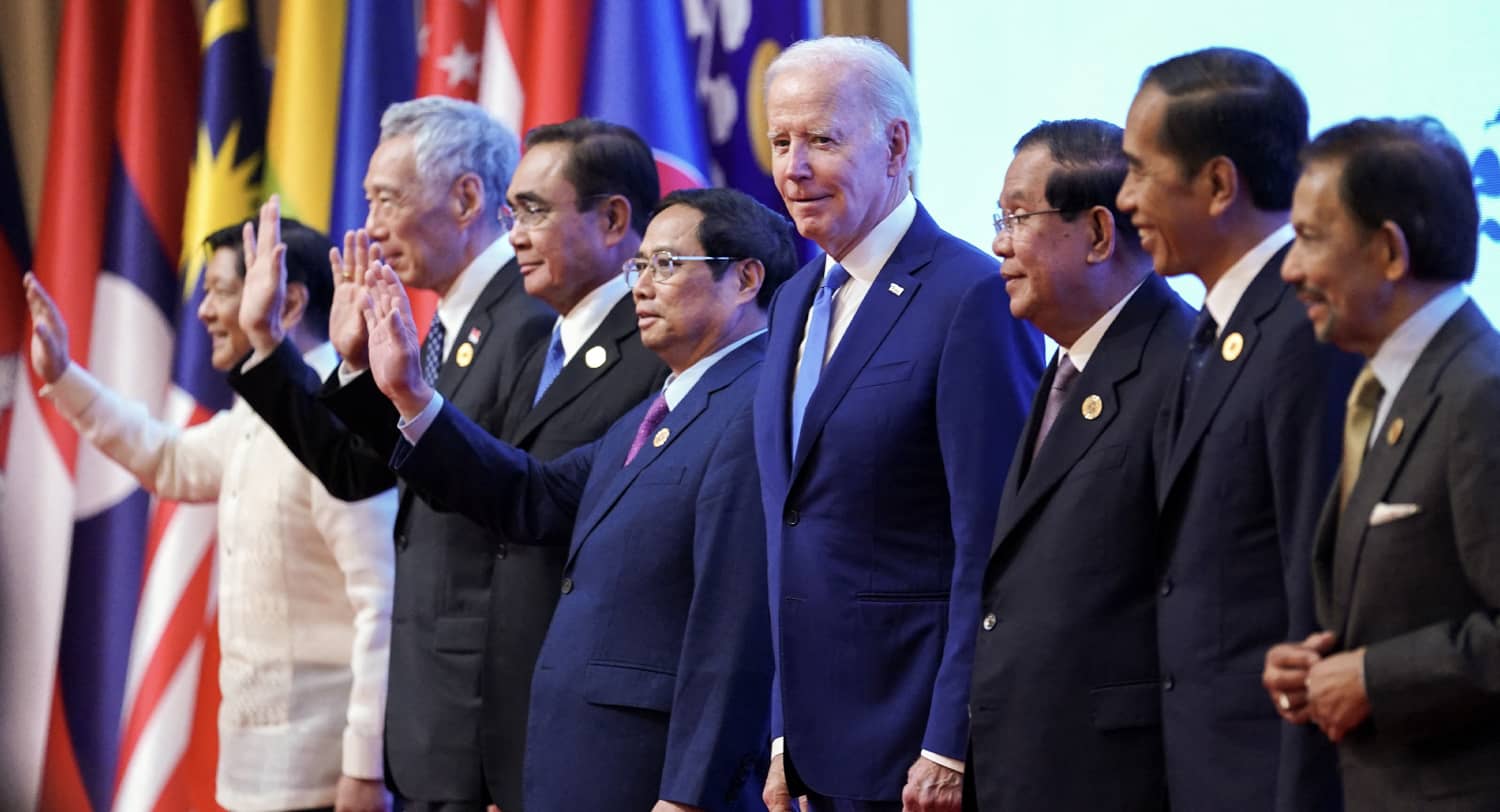I once asked a Vietnamese friend what an impending leadership change in Hanoi meant for his country’s relations with China. “Every Vietnamese leader,” he replied, “must get along with China; every Vietnamese leader must stand up to China; and if you cannot do both at the same time, you don’t deserve to be the leader.” His answer succinctly describes Southeast Asia’s general approach not only to China but also to other major powers and major power competition.
Southeast Asia is an extremely diverse region that has always been a strategic crossroads where the interests of external powers intersect and sometimes collide. Today’s competition between China and the US is just another iteration of a centuries-old dynamic that has embedded a diplomatic instinct in the region to simultaneously hedge, balance, and bandwagon.
Successful foreign policies in Southeast Asia have always been polygamous, not monogamous. After independence, no Southeast Asian country — not even formal US allies Thailand and the Philippines — has felt obliged to neatly align all interests across all domains in the direction of any single major power. A country may, for example, balance with the US against China in defense and security, hedge with Japan, Europe or South Korea against American restrictions on technology exports, while bandwagoning with China for infrastructure development and privileging yet other partners in different economic domains.
Even during the colonial era, Southeast Asia never fell under the sway of any single external power, except for the brief period of Japanese occupation during World War II. The diversity of the region makes attempts to grasp it whole akin to trying to grab a fistful of water. Moreover, a strategic crossroads is naturally multipolar, and more than one or two external powers will almost always be present and competing for influence. In multipolarity and competition there is agency or at least maneuver space.
Whether or not one can take advantage of such opportunities is an entirely different matter. To maximize the opportunities of multipolarity requires judgment, agility and courage. Not every Southeast Asian country has always played this complex game well.
History does not repeat itself, but as Mark Twain once said, it often rhymes. It is not entirely coincidental that the two Southeast Asian countries who are today least successful in maximizing their autonomy amidst US-China competition are Laos and Cambodia. In the 1960s and early 1970s, when the Cold War was hot in Southeast Asia, their desperate efforts to manage the even more dangerous US-Soviet competition by first trying to adopt neutrality as passively defined – laying low and hoping for the best – and then aligning all their interests with one power (the US) led to very tragic consequences for these countries. Whether by alignment or passivity, they surrendered agency and allowed themselves to be trapped in path dependencies. They may be on the cusp of making parallel mistakes today.
Simultaneously hedging, balancing and bandwagoning as interests dictate is a proactive technique. It demands constant alertness, coldly clinical judgments, continual adjustment, and awareness that situations and hence choices are seldom, if ever, static or only binary. Many observers of Southeast Asia – and indeed of contemporary international relations in general — seem to find this difficult to grasp.
Forty years of US-Soviet Cold War competition has hardwired a strong tendency to view regions in externally defined binary terms , as if the countries that make up regions have no interests or agency of their own or are too obtuse to understand their own interests. This was and is certainly the case in Southeast Asia: if the region is not ‘free’ it will become ‘red’; if democracy is not advancing, it must be in retreat; if the Association of Southeast Asian Nations (ASEAN) does not align with the US, it will be captured by China. This simplistic attitude had led to policy failures, most dramatically, during the Vietnam War.
Fifty years ago, the US corrected the mistake it made in Vietnam by cutting its losses and moving from a strategy of direct intervention to one of acting as the off-shore balancer, relying more on naval and air power than ground forces to maintain equilibrium in East Asia. (East Asia is defined as Northeast Asia and Southeast Asia. Strategically the two sub-regions can no longer be neatly separated and the new concept of the Indo-Pacific incorporates South Asia as well.)
With the Korean Peninsula – where the US keeps a large troop presence – as an exception, the US has been remarkably consistent and successful as off-shore balancer in East Asia for half a century. The region’s economic prosperity, including China’s rise, rests on this stable foundation.
An analogous shift to an off-shore balancing role is underway in the Middle East as the US rectifies its mistaken direct interventions after 9/11 in Iraq and Afghanistan, which mired it in the longest wars in American history until President Biden cut the Gordian Knot in Afghanistan. This is sometimes misleadingly portrayed as America in retreat. It is highly improbable that the US will ever again intervene on a large scale in the Middle East with ground troops. But the 5th Fleet is still in Bahrain and the US Air Force is still in the UAE, Qatar and Turkey, and even after its withdrawal from Afghanistan, the US has demonstrated that it can reach out from afar to kill those it considers particularly dangerous.
Dealing with an off-shore balancer is different from dealing with a power prepared to intervene directly. The typical Middle Eastern strategy to ensure security has been to identify the strongest external power and cling to it. Since the Second World War, the US was the choice of most, although some states in the Levant bet on the Soviet Union. Many in the Middle East, including in Israel, have been discombobulated by the realization that the US is now reluctant to play this role. Although Saudi Arabia and the UAE have been particularly quick to adapt to the new situation, Southeast Asia’s half century of experience in dealing with the US as off-shore balancer may still be of interest to the Middle East.
There are three key points.
First, and most crucially, do not overreact. The more-chaotic-than-necessary US withdrawal from Afghanistan evoked images of the US retreat from Vietnam and brought questions about America’s reliability again to the fore. An off-shore balancer will always evoke fears of entanglement if too assertive and fears of abandonment if too passive. But the Vietnam analogy is superficial and war in Ukraine has underscored what ought to have always been obvious – the irreplaceable US role in maintaining regional balances. As previously noted, the US has in fact been remarkably consistent over 50 years in maintaining equilibrium in East Asia as an off-shore balancer.
The really important question is therefore not whether the US is reliable but whether or not there is any alternative to the US. Bogged down in what will be a long, grinding war in Ukraine, Russia has probably reached the limits of its capabilities in the Middle East, and can be seen as dangerously troublesome but no substitute.

China prefers to keep its Middle Eastern engagements primarily economic. It remains to be seen if this is possible, and the restoration of diplomatic relations between Saudi Arabia and Iran announced in Beijing on 10 March signaled a new phase in Chinese policy towards the Middle East. Still, Beijing’s desire to simultaneously maintain as good as possible relations with Iran, Saudi Arabia and Israel is a delicate balance that sets limits to what China can do. During the recent visit of Mahmoud Abbas to Beijing, Xi Jinping reportedly pushed China as a mediator in the Palestinian issue. If I were Israel or the US, I would welcome this: it’s a thankless task that is almost certainly bound to fail!
We should evaluate China’s role in the 10th March deal at its true weight. It was Oman that worked quietly behind the scenes for two years to make the deal possible, and if Riyadh and Tehran had not, each for their own reasons, wanted to stabilize their relationship, there would have been nothing to announce whether in Beijing or any other capital. More importantly, on 9th March the Wall Street Journal reported, from an obvious Saudi leak, that Riyadh was prepared to join the Abraham Accords if the US provided it with security guarantees and allowed it to master the nuclear fuel cycle.
Saudi fears of Iran are clearly undiminished even as Riyadh seeks to stabilize its relationship with Tehran. Nor are these conditions that China can meet without abandoning its ‘Strategic Cooperation Agreement’ with Iran. This is highly improbable. China has no partner anywhere in the world of any strategic weight that shares its deep distrust of the West other than Iran and Russia. There is only one America and its indispensability makes the question of reliability moot.
Second, the really important question is therefore how to keep the US anchored in the Middle East over the long-term. This is likely to be a greater challenge for the Middle East than it was for Southeast Asia. The US is no longer reliant on Middle Eastern energy. The focus of both global growth and geopolitical competition has shifted to East Asia. With US-China rivalry set to become a structural condition of 21st century international relations, Southeast Asia located between the Pacific and Indian Oceans compels US attention. In addition, there is no equivalent in the Middle East of the US-Japan alliance – the linchpin of the US alliance system in East Asia.
The US will not abandon the Middle East, nor will the Middle East abandon the US. There is no other viable security provider, and Middle Eastern energy will be important to the world economy for a long time to come.
But American interests in the Middle East are now of a lower order. After the Cold War, the US faces no existential threat anywhere, as I wrote recently in Foreign Affairs, and certainly not in the Middle East. Iran’s support for terror groups is undoubtedly dangerous, but does not pose an existential threat to any well-constituted state. A nuclear-armed Iran will certainly pose an existential threat to Israel and the Gulf states. But it is not to be taken for granted that the US will see a nuclear Iran in the same way, and this is perhaps the larger meaning of the Abraham Accords.

Absent any existential threat, an off-shore balancer demands more of its allies, partners and friends to maintain regional order. The Biden administration is as transactional as its predecessor, albeit more polite and consultative. But its consultations are to see what countries are prepared to do with it vis-à-vis its major preoccupation, China. To those who meet expectations, the Biden administration has been prepared to be more generous than any previous recent administration in sharing the tools to meet common strategic objectives. For example, AUKUS (Australia, UK and US) is the first time the US has shared nuclear submarine technology with an ally in more than 60 years.
ASEAN as an organization has not yet fully internalized this new American approach and hence its claim of ‘centrality’ in East Asia risks becoming more a matter of diplomatic politesse than a strategic reality. Still, at the national level, ASEAN member states are beginning to strengthen bilateral defense ties with the US, including old foe Vietnam and Indonesia which prides itself on its ‘free and active’ foreign policy. Former Philippines President Duterte was anti-American, but strengthened defense relations with the principal US ally in East Asia, Japan. His successor, President Marcos Jr., has given US forces access to bases in the Philippines that will be crucial in any conflict over Taiwan.
Singapore is not a US ally but has closer and deeper defense and security relations with the US than its formal Southeast Asian allies, Thailand and the Philippines. US forces are regularly rotated through or operate from facilities in Singapore. This was once subject to strong criticism, particularly by Indonesia and Malaysia, but is now regarded as something of a regional public good in so far as it keeps the US anchored in Southeast Asia. In the Middle East, Israel probably plays an analogous role to Singapore, but this needs to be complemented by stable US-Saudi ties.
The US presence in East Asia has also been presented as in decline based on selective economic criteria. See for example Ryan Hass, “The New Great Game for Leadership in Asia,” in these pages. Hass focuses on the US decision to abandon the Trans Pacific Partnership (TPP) and its exclusion from the Regional Comprehensive Economic Partnership (RCEP). Walking away from the TPP was a blunder but the RCEP is intended to rationalize ASEAN’s free trade agreements and, as there is no such US-ASEAN agreement, the US does not qualify. The US remains a vitally important bilateral economic partner to most countries in East Asia and the source of quality investments, even though in volume China is the largest trading partner of most. The stock of US investment in Southeast Asia is larger than that of China, Japan and South Korea combined. Hass cites a survey in Singapore that shows that China is regarded as growing in importance by all ASEAN members, but he fails to mention that the same survey shows China as the least trusted external power by all members.
Third, while the Middle East is diversifying its relationships with major powers, it lacks mechanisms akin to ASEAN’s fora, such as the ASEAN Regional Forum, the East Asia Summit and the ASEAN Defense Ministers Plus, in which all the major powers participate. These fora are often derided as talk-shops. The criticism is not entirely unwarranted but is beside the point.
ASEAN’s conception of regional security was once based on the superficially attractive but dangerous idea that the major powers were the main source of Southeast Asia’s problems, and if they could somehow be excluded from the region, milk and honey would flow. This foolishly dangerous notion found expression in the idea of Southeast Asia as a Zone of Peace, Freedom and Neutrality and the treaty establishing a Southeast Asia Nuclear Weapon Free Zone.
While these notions are still on the books, they are neutered. The ASEAN fora instead invite all of the major powers to participate in discussions on regional security. ASEAN has legitimized the major powers’ presence, provided alternative fora for their competition (it is better to talk than fight), and most crucially, undercut the dangerous idea that ASEAN should ‘exclude’ external powers. This idea is dangerous because it excludes the US while two other powers are contiguous to ASEAN – India and China – and the US is needed in order to balance potential Chinese domination.
The ASEAN fora serve, in however slight a manner, to promote balance and enhance the natural multipolarity of Southeast Asia which, as previously noted, maximizes the opportunity for regional countries to exercise agency.
These ASEAN fora must now share space with other forums such as the Asia Quad (India, US, Japan and Australia), AUKUS, and the Shanghai Cooperation Organization, but that does not detract from their essential function. East Asia is a large and messy region and the new concept of the Indo-Pacific is even larger and messier. It is thus only to be expected that the regional security architecture should consist of multiple overlapping frameworks rather than a single structure.
The primary function of ASEAN is internal – to stabilize Southeast Asia by managing relations among its members. Given the state of Southeast Asia in 1967 when ASEAN was formed – it was not for nothing that the region was then commonly called ‘the Balkans of Asia’ – in this respect it has been extraordinarily successful.
ASEAN’s record in managing external relationships is more patchy. But the primary tools for managing major power competition in Southeast Asia have always been national rather than regional. There will always be differences among ASEAN members in how they calculate their interests vis-à-vis the US, China, Russia and other major powers. This is natural in a diverse region. ASEAN’s operating assumption is that there will always be differences that need to be managed — not just on geopolitics, but on a range of issues – hence the need for a regional organization in the first place.
ASEAN and its fora are imperfect but nevertheless useful secondary instruments for managing relations with major powers. In any case, the Middle East lacks anything that comes near them. Neither the Arab League nor the Gulf Cooperation Council includes all states in the Middle East.
In an age when the primary global security provider expects all regions to take more responsibility for themselves, this is a serious lacuna that the countries of the Middle East should address.

